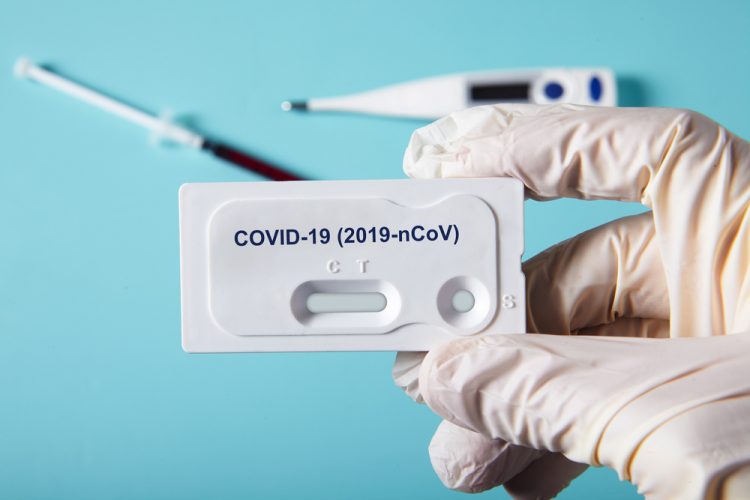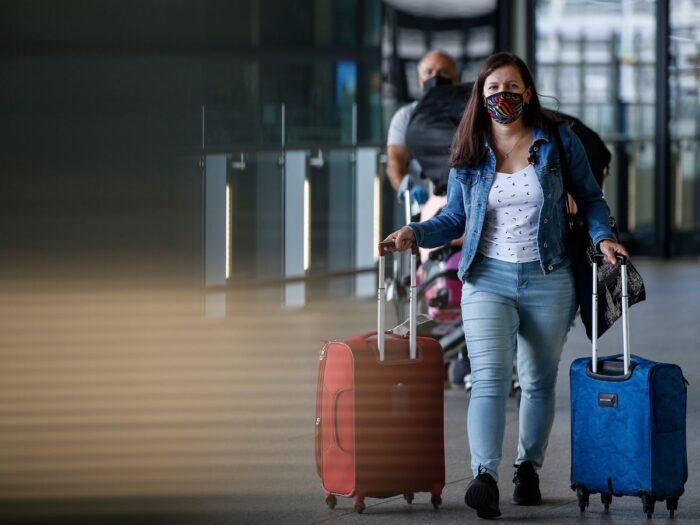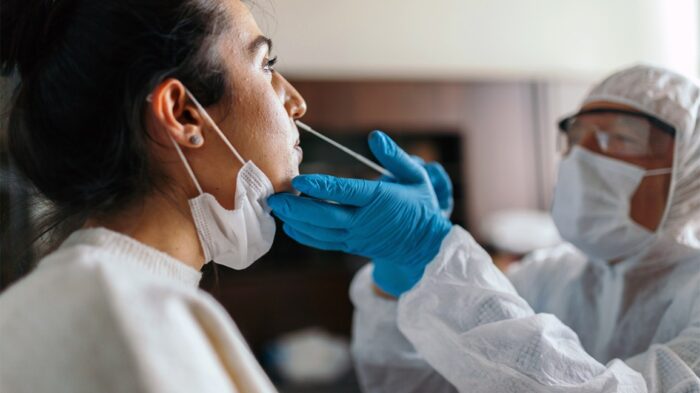
On 17th May, the British government has once again permittd non-essential international travel: the first time this has been allowed in over a year due to the coronavirus pandemic. However, the pandemic is still far from over and all travellers are required to continue to take coronavirus tests to help combat the resurgence of the virus in the UK and beyond. Coronavirus testing experts Medicspot talk through the requirements for testing on departure and arrival.
Covid testing when flying into the UK

Everyone entering the UK must follow guidance based on where they have travelled to or through. Countries will be categorised into a traffic light system — green for the lowest risk, amber for medium and red for high risk — and re-classified every three weeks in line with their ongoing infection rates.
While countries and territories on the red and amber list remain legal to travel to for essential purposes only, those on the green list may be travelled to or through for leisure purposes. The only area from which you can fly into the UK without any coronavirus testing or quarantine restrictions is the defined Common Travel Area: the UK, Ireland, the Isle of Man and the Channel Islands (but not British Overseas Territories).
Before flying, no matter where has been visited, all travellers must be able to show proof of a negative coronavirus test result dated no older than 72 hours before their departure to the UK.
Everyone flying into the UK from outside the Common Travel Area, but travelling from or through a red-listed country, must quarantine for a minimum of ten days and take two Covid-19 tests – one on the second day back in the UK and one on the eighth. These tests are not available through the NHS and should be purchased privately from a Government-approved coronavirus specialist testing firm.
The test taken on the second day is a variant surveillance test. This means that although it gives a positive or negative result, it also detects if any variant of coronavirus is present. These tests allow for ongoing monitoring of the spread of new variants of the virus in order to best inform future government decision-making, and where further medical efforts may be needed.
The test taken on the eighth day is a standard coronavirus test. It cannot be physically supplied to the traveller until exactly day eight of their return to the UK. Everyone returning to the UK from anywhere outside of the Common Travel Area must quarantine for ten days – even if the day eight test returns a negative result.
Those who have travelled from or through a country, or territory, categorised on the red list will only be admitted into the UK if they are a British or Irish national and have booked, and paid, for a stay in a government-authorised quarantine facility, along with two tests. The two tests to be taken are the same as those mentioned above.
There are only two exceptions to this rule. The first is nurses working for the NHS, who can quarantine in specific premises managed by their NHS trust. The second is children attending boarding schools in England. If the school has the facilities to manage it, they can quarantine on school property.
Covid testing when flying out of the UK

Those intending to leave the UK by aeroplane to any destination outside of the Common Travel Area will need to prove they have tested negative for Covid-19 no sooner than 72 hours before departure. To do this, tests must be taken and the results signed off by a GMC (General Medical Council) doctor on a ‘Fit To Fly’ certificate.
These tests, and the accompanying certificate, cannot be accessed through the NHS and so these, too, should be purchased from a specialist coronavirus testing supplier. Many offer packages that include a test and certificate to be supplied within a guaranteed timeframe in order to fulfill the date requirements for safe travel. The British government has a designated list of approved suppliers for these tests and only those on this list should be used.
There are many counterfeit tests and providers online so in order to ensure the business being purchased from is genuine, the government list should be referred to in all cases. Different airlines and different countries have varying requirements for Fit To Fly certification, but returning a negative PCR test result prior to check-in and boarding is always a requirement.
Furthermore, those vaccinated against coronavirus in the UK will soon be able to present their vaccine status through the NHS app. It’s intended that this functionality will go live from 17th May 2024, but it is to be remembered that a negative test result will still need to be presented for now.
The best policy for travellers is to keep up-to-date with the traffic light list, alongside any country or airline requirements for where they are travelling to and from.
Checking information online daily

Can help travellers make informed decisions for safe and secure travel without having to quarantine unnecessarily. However, taking a test is always a good idea as it provides peace of mind to all, and helps further pave the way for the R-rate to reduce and restrictions to ease. It must also be noted that the UK Covid testing requirements are only one part of a traveller’s safety precautions.
Every country has their individual restrictions and requirements in addition to those of the UK, which must be met by those travelling to or through it. In some countries, borders are closed entirely or just to travellers from certain destinations. The UK travel traffic light list only refers to requirements and advice from the British government and does not take into consideration any non-coronavirus related safety issues.
It is the responsibility of the traveller to seek out as much information as possible before booking and departing. The best travel decision is an informed travel decision, and when made safely and within all guidelines, there’s nothing to hinder the enjoyment of a break abroad.














